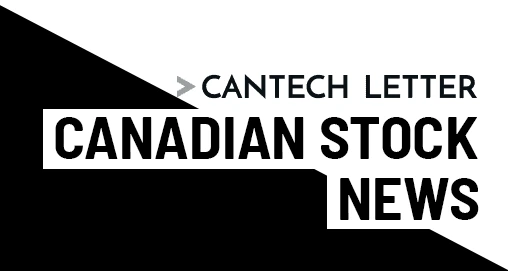RIM Negativity: Six Counter Arguments

Negativity about Research in Motion: Six Counter Arguments
This past Thursday, Research in Motion (TSX:RIM) reported its Q2 2011 results. The numbers, which beat the street’s expectations significantly, appeared strong enough to quell a growing negativity that has hounded the company and sent its shares near three year lows. The number of smartphone units that RIM shipped increased by 45% year over year to 12.1 million. This meant top line numbers were also way up; the $4.62-billion dollar quarter was a record for the company, and a 31% increase, year over year. Despite these accomplishments, analysts chose to focus on an increasingly competitive smart phone landscape. Shares of the Waterloo tech giant were up only marginally on Friday.
New Cantech Letter contributor Saj Karsan finds the wave of wave of negativity around RIM curious. We have been admirers of Saj’s writing at www.barelkarsan.com for some time now, and encourage all Cantech Letter readers to check out the site, which has become essential reading for value investors. Saj, who has an MBA from the Richard Ivey School of Business and has completed all three CFA exams, will contribute to Cantech Letter when his universe of coverage meets ours; when he believes a Canadian tech stock may represent value and a high margin of safety. The first such situation he has identified for us is Research in Motion. Saj Karsan talks about Negativity about Research in Motion and offers Six Counter Arguments.
Disclosure: Saj owns shares of Research in Motion, but has no other affiliation with the company
Negativity about Research in Motion: Six Counter Arguments
by Saj Karsan
The global smartphone market is growing at 30%+ per year. RIM is a huge player in this industry, and the company is benefiting from the industry’s growth. Last Thursday, RIM released a stellar 2nd quarter earnings report that blew away expectations. Nevertheless, the stock has lost almost 2/3 of its value over the last two years. As a result, the stock has may now be a value opportunity, for the following six reasons:
1) RIM has high Returns On Capital
RIM is highly profitable. Profitability is not about market share momentum, but that’s what the market is focused on. Profitability is about generating returns on investment. RIM generates extremely strong returns, as its trailing twelve months return on average equity is 38%! (This is superior to Apple, though Apple is also in businesses other than phones, so a direct comparison is difficult. Google, on the other hand, gives Android software away free, currently generating nothing in the way of returns.)
A 38% return on equity is enormous. To put it in perspective, Google, Microsoft and Exxon, three very profitable companies at the moment, generate returns on equity of just over 20%.
_________________________________________________________________________________________________________________
This story is brought to you by Serenic (TSXV:SER) Serenic Corporation is a global provider of financial and business management software products that satisfy the unique and sophisticated functionality requirements of nonprofits, international non-governmental organizations (NGOs), and the public sector.
____________________________________________________________________________________________________________________
2) The Stock is Cheap
RIM’s P/E is under 9, based on trailing twelve month firm earnings and the company’s current market cap, following its recent share buybacks. This is extremely cheap for a company growing revenue 30% year-over-year that has outstanding returns on equity. As Joel Greenblatt has shown time and again, a stock with a high ROE and a low P/E is a recipe for success.
3) There is Safety in RIM’s Financial Position
The company has no debt, and sits on a couple of billion dollars of cash. Furthermore, the company generates about a billion dollars in cash per quarter, leaving it free to make further return-generating investments or return cash to shareholders (of which it does both).
Often, companies see high returns on equity by levering up with debt. RIM generates the strong equity returns described above even though it typically carries a few billion dollars in cash!
4) New Products
Right now, the company’s earnings reports include costs associated with products not yet on the market (e.g. the company is reportedly coming out with a tablet computer in November). The company now spends $300 million per quarter in R&D, but the benefits (in the form of revenues) for the new products are obviously not yet reflected in the current financials, even though the costs are. As such, the company is even more profitable than it appears, as many of its current expenses are for future products.
5) Buybacks
The company knows its shares are cheap, and so it is reducing its outstanding share count at a price that is beneficial to current shareholders. In the first six months of this year, RIM has spent $2 billion buying back shares, whereas its market cap is only $25 billion.
6) Confirmation Bias
RIM blew earnings estimates away when it reported 2nd quarter results Thursday (revenues, units, prices, and earnings all beat expectations). But the market focused on two items, and kept the stock price down: 1) subscriber growth was lower than was guided, and 2) the company will no longer guide on ASP’s and subscribers. The focus on these particular items is taking place because existing market sentiment on the company is already negative, and our tendency to be influenced by confirmation bias causes us to selectively place undue importance on items that confirm our original opinion. In this case, the market is negative on RIM, so it is focusing on any negative that it can find.
Market sentiment can change quickly, but it has not done so on this stock, despite the stellar earnings report. But the best time to invest is when market sentiment is negative, because that’s when the investor is offered a great price. That time is now for Research In Motion.
Further reading from Saj:
Read Why RIM is not the next Palm
Curious about the picture? Read about how Saj met Warren Buffett
Nick Waddell
Founder of Cantech Letter
Cantech Letter founder and editor Nick Waddell has lived in five Canadian provinces and is proud of his country's often overlooked contributions to the world of science and technology. Waddell takes a regular shift on the Canadian media circuit, making appearances on CTV, CBC and BNN, and contributing to publications such as Canadian Business and Business Insider.


